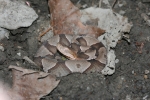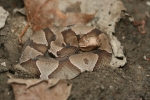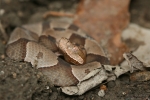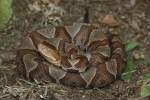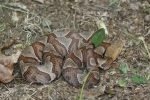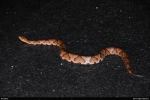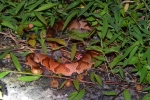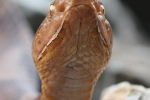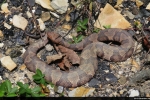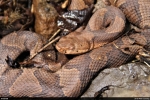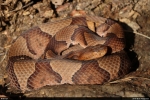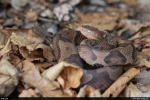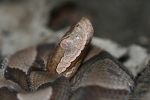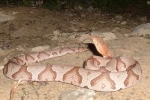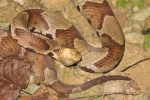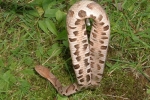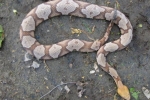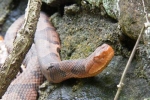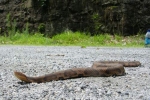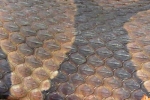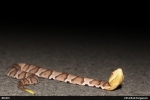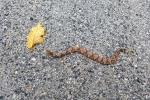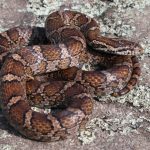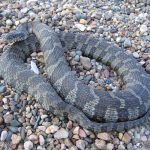Northern Copperhead - Venomous
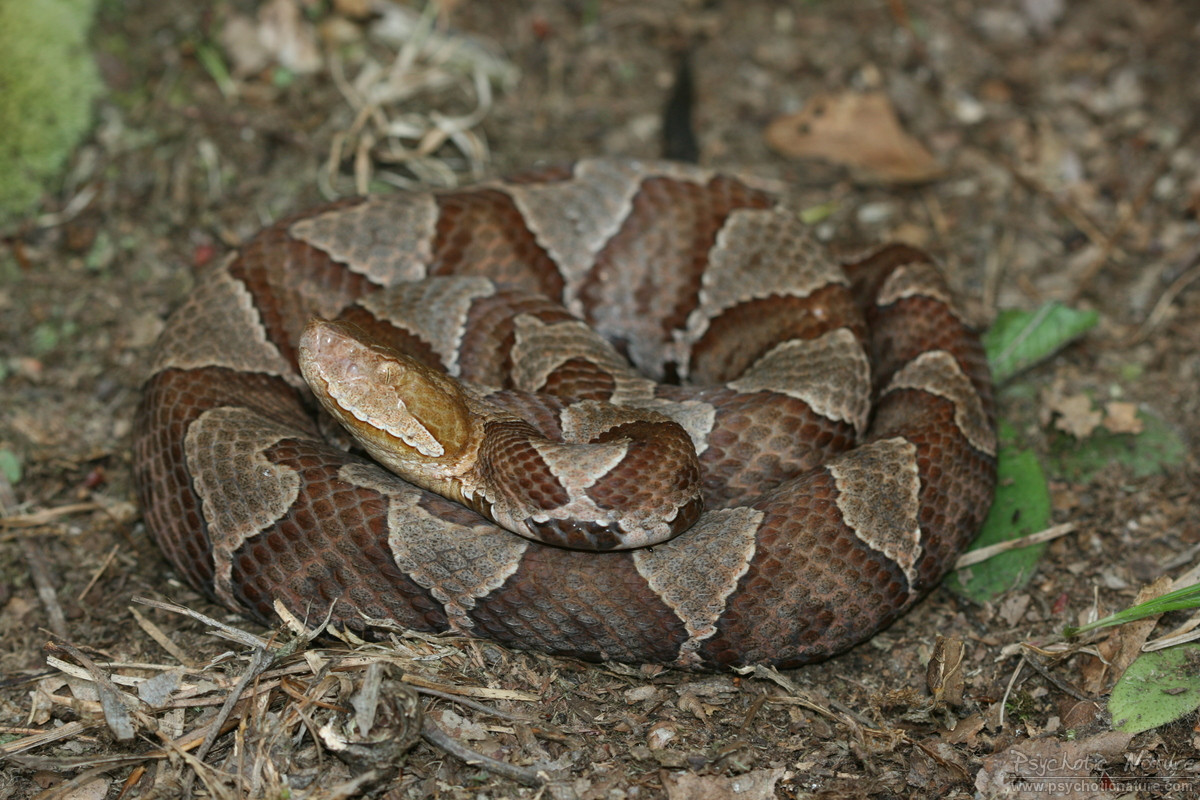
Scientific Name: Agkistrodon contortrix
Size: 24-36 inches (61-90 cm) in length
Status: Species of special concern
PAHERP Resource: Copperheads Mistaken Identity
Habitat:
Deciduous forest, open fields and clearings (ofter near streams, but water is not a habitat requirement), rock crops, rock ledges, open habitat with rock and vegetation. May be found under large logs, rocks, around brush piles rock crevices or slides.
Description:
Medium-sized, heavy bodied species. The background is pinkish brown, light tan to greyish brown with wide brown to reddish brown bands that become darker towards the margin. The bands are saddle shaped (hourglass) that are broader along the sides and become narrower across the dorsum. Small dark spots are present inside the light area between the bands. The bands continue to the tail. The underside l is cream to light brown with dark lateral blotches along the margin of the ventrals. The head is unpatterned with a reddish brown to bright coppery dorsal, and the lower half is usually lighter in color. The tail is yellow, green, or brown. The head is large, flat and triangular in shape. The head is distinct and set off from the body by a narrow neck. Pupils are vertically elliptical. The dorsal scales are keeled.
- The dorsal background is pinkish brown, light tan to greyish brown.
- The dorsal has wide brown to reddish brown bands that become darker towards the margin.
- The bands are saddle shaped (hourglass) that are broader along the sides and become narrower across the dorsum.
- Small dark spots are present inside the light area between the bands.
- The bands continue to the tail.
- Dorsal scales may have black flecks
- The ventral is cream to light brown with dark lateral blotches along the margin of the ventrals.
- The head is unpatterned with a reddish brown to bright coppery dorsal, and the lower half is usually lighter in color.
- The tail is yellow, green, or brown.
- Medium-sized, heavy bodied species.
- The head is large, flat and triangular in shape.
- The head is distinct and set off from the body by a narrow neck.
- Pupils are vertically elliptical.
- The dorsal scales are keeled.
- Similar to adults but with a bright green to sulfur yellow tail.
- Lack the black flecks on dorsal scales.
- 31 or 23 scale rows at midbody.
- 23 or 25 scale rows at anterior.
- 19 or 21 scale rows at posterior.
- 138-157 ventral scales
- 37-63 subcaudals scales | Single row of subcaudals
- 2 nasal scales
- 1 loreal scale
- 2-3 preocular scales
- 2-3 subocular scales
- 3-4 postoculars scales
- several temporal scales
- 8 supralabials
- 10 infralabials
- Anal plate is undivided


References:
- Hulse, C. and McCoy C. J. and Ellen Censky ,1998. Amphibians and Reptiles of Pennsylvania and the Northeast. 346-350pp.
- Ernst, Carl H. and Ernst, Evelyn M. ,2003. Snakes of the United States and Canada. 473-480pp.
- Wayne Fidler
- Bob Bull
- Matt Nordgren
- Bob Ferguson
- Don Becker(psychoticnature.com)
- Brandon Hunsberger
- Phil Dunning
- Dave Hughes
Heads up!
Please contribute your observation of this and other herps to the Pennsylvania Amphibian and Reptile Survey. Your help is needed.
